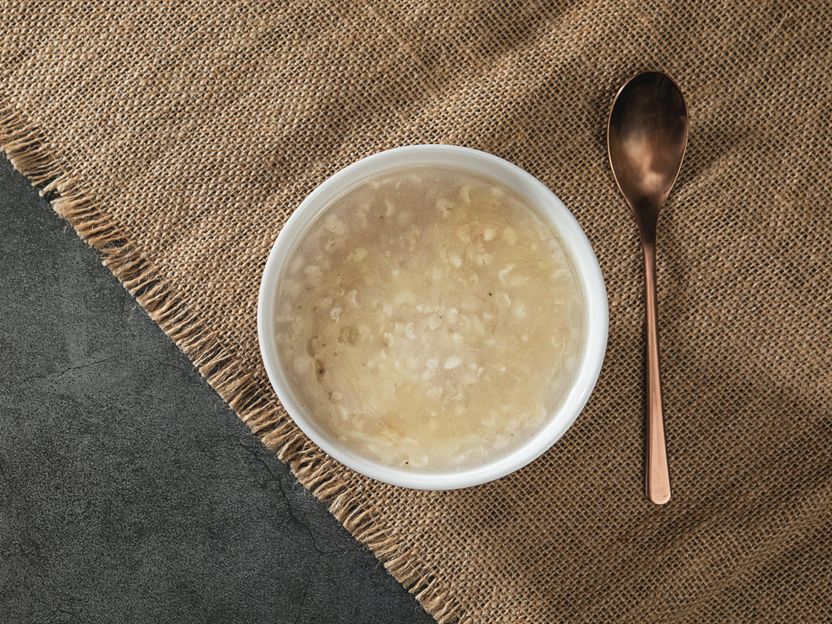Porridge-making in the Neolithic period
Cereal, milk and meat were the staple diet of people in Britain as long as 5500 years ago. By carrying out a chemical analysis of lipid residues in well-preserved ceramics, a research team led by the University of Bristol and including researchers from Friedrich-Alexander-Universität Erlangen-Nürnberg (FAU) have proven for the first time that people in Neolithic Britain not only consumed barley, but also wheat, which was prepared in clay pots designed especially for this purpose.

Photo by Charles Chen on Unsplash
The results of their investigations have been published in the journal Nature Communications under the title “Neolithic culinary traditions revealed by cereal, milk, and meat lipids in pottery from Scottish crannogs”.
Cereal cultivation in Britain dates back to ca. 4000 BCE, probably introduced by migrant farmers from continental Europe. Rare finds of preserved cereal grains and other remnants from the Neolithic period suggest that this is the case. At the same time, pottery was becoming more widespread. Molecular lipid residues can still be found in pottery from the Neolithic period after becoming embedded in the unglazed vessel during cooking or storage, and give insights into the culinary habits of the population at that time.
Porridge, gruel and stews
On the basis of excellently preserved pottery dating from approximately 3600 to 330 BCE recovered from under water, the researchers have now been able to prove that wheat was also consumed. Until now, researchers had believed that the population’s diet centered predominantly on barley, as evidence of burnt wheat has only been found extremely rarely, indicating that it was not a major component of meals. The researchers were also able to prove for the first time that the stone age people cooked wheat together with milk in pottery vessels reserved for that purpose only. Meat, on the other hand, was cooked in other, slightly larger vessels. “Our findings are exciting for several different reasons,” explains Prof. Dr. Simon Hammann, assistant professor for Food Safety and Quality at FAU, who was responsible for conducting the chemical analysis of the lipid residues. “They indicate that cereal biomarkers can be preserved for more than five thousand years under ideal conditions, for example under water, with no exposure to air. This means that the analysis of lipids can be a valuable addition to methods from the field of archeobotany for researching the beginning and spread of agriculture, as well as research into cultural history.”
How does the chemical analysis of lipids in ceramics work? After being repeatedly boiled or roasted or stored for longer periods of time, the lipids are absorbed into the porous matrix of the pottery vessels, where some of them have remained for several thousands of years. The biomolecular components are decoded using gas chromatography and mass spectrometry, producing a chemical fingerprint that can be used in addition to determining the ratio of carbon isotopes in the lipids (δ13C) to identify the foodstuffs that were consumed at that time.
Mysterious artificial islands
The pottery vessels themselves are richly decorated and were found in the vicinity of “crannogs”. These are small artificial islands built in water, whose purpose remains a mystery. For the project in question, the team investigated four crannogs in the Hebrides, a group of islands off the northwest of Scotland. The decoration and state of preservation of the pottery suggest that the vessels and the meals may have served ceremonial purposes. “This research gives us a window into the culinary traditions of early farmers living at the north-western edge of Europe, whose lifeways are little understood,” explains project leader Dr. Lucy Cramp from the University of Bristol. “It gives us the first glimpse of the sorts of practices that were associated with these enigmatic islet locations.”
Further information on the methods used for the chemical analysis.
Other news from the department science
Most read news
More news from our other portals
See the theme worlds for related content
Topic world Food safety
Food safety is at the heart of the food and beverage industry. It ensures that the food we eat every day is not only nutritious, but also free of harmful contaminants. From field to plate, the industry monitors and regulates every step of the process with strict quality controls, advanced testing methods and continuous research.

Topic world Food safety
Food safety is at the heart of the food and beverage industry. It ensures that the food we eat every day is not only nutritious, but also free of harmful contaminants. From field to plate, the industry monitors and regulates every step of the process with strict quality controls, advanced testing methods and continuous research.




























































